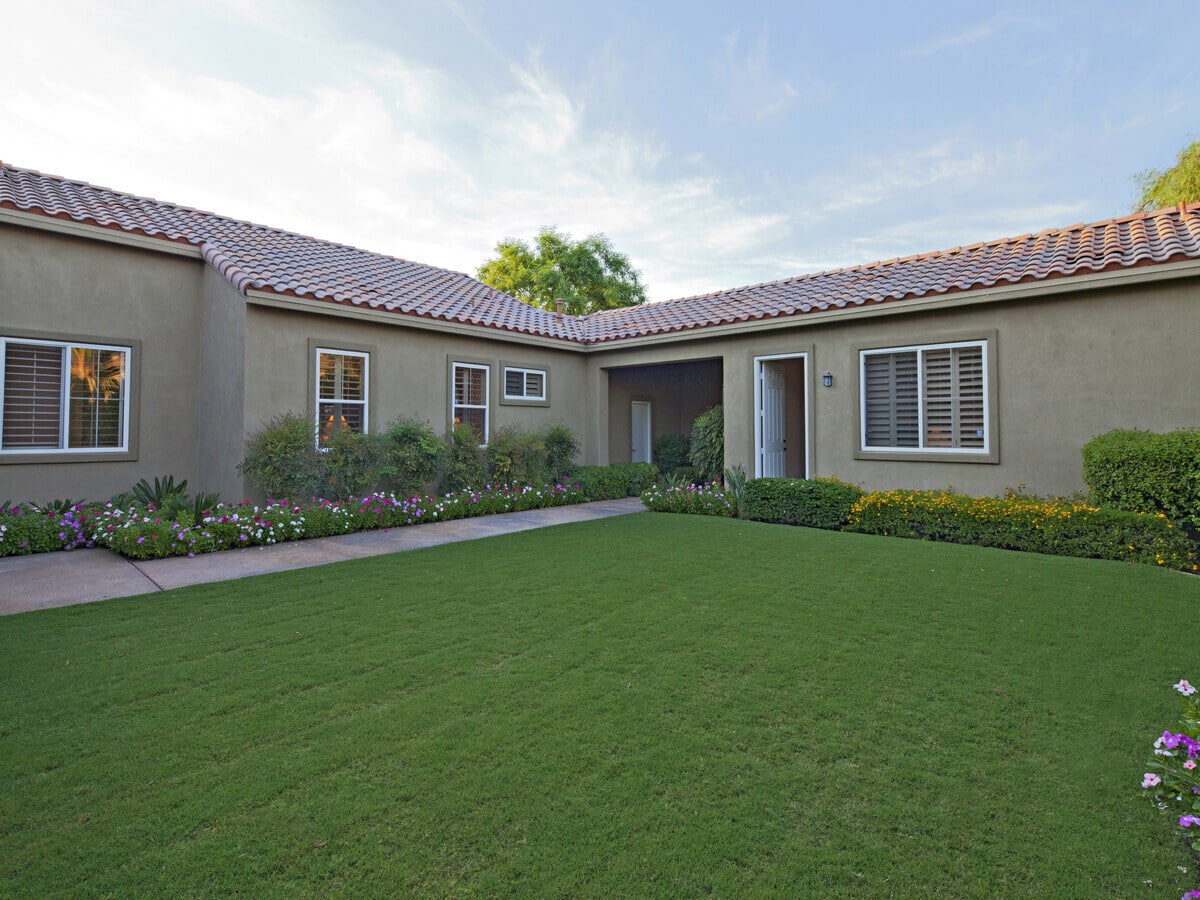Garden Landscaping projects involve Sleepers that can be laid in just 2 to 3 hours. Garden Sleepers help create practical and effortless ways to define perfect edges to your garden.
It has many benefits, but preventing unnecessary soil spillage in your garden is considered a significant advantage. In addition, people accidentally walking on your lawn or pets running on the lush green grass can also be seen as a major benefit of Sleepers.
Usually, sawn pieces of timber are used for this purpose. However, the Garden Sleepers is not only used to make fine edges to the garden but also used to create :
- Raised Garden Beds
- Steps with Plants
- Pathways alongside the garden
- Retaining walls
Table of Contents
- Choosing the Right Garden Sleeper
- Step By Step Guide to Lay Garden Sleepers
- Practical Tips to Lay Sleepers in Your Garden
Choosing the Right Garden Sleeper
Every garden requires a sleeper that suits its plants. Of course, it is all in the type of wood you choose to make the sleepers. However, this determines the outdoor aesthetic of your lawn.
Also, the type of wood is selected based on the speed of growth of the plants too.
The two types are
- Softwood
- Hardwood
The softwood is used to lay the sleeper around the plants that tend to grow faster. Hardwood is used in the opposite case. A few soft and hardwood sleepers are mentioned below.
Any oak wood falls under the hardwood category, while the ones made out of larch, pine and spruce are softwoods.
Both the types are equally good, and the softwood can withstand a lot of pressure while the hardwood might break in the longer run.
Step By Step Guide to Lay Garden Sleepers
It is indeed a simple DIY assignment. However, a good amount of knowledge in measuring the dimension and tools to perform the task makes it easy to lay the foundation quickly.
Before we get on to the steps to lay the sleepers, let us first conclude on the tools required for this process.
Tools Required
1. Spirit Level
2. Saw
3. Screws, Steel rod Pins and Brackets for the Sleepers
4. New 200mmX100mm railway sleepers
5. Screw Driver
6. Retaining Posts
Please note: The sleepers must be new and not reclaimed.
Prerequisites
As we saw the tools as required, we would also define the prerequisites before beginning the task. Laying the sleepers is to make the garden look elegant.
The only prerequisite for setting this sleeper structure is to clean the entire garden debris free.
Let’s quickly start the process from Step 1
Step 1: Choose the Right Spot to Lay the Garden Sleepers
It would help if you found the right edges to lay the sleepers appropriately. You can do this by locating the bed and mark the boundaries around the raised bed.
It is always suggested to locate these places at the edge of your lawn. There is where the lawn bed begins.
There are instances where you can find raised beds in the middle of the lawn too. In such cases, you can still mark the edges.
Laying sleepers will create a new look to your garden. This first step sets the tone for the same too.
Step 2: Dig Shallow Trenches around the edges
The edges that you have marked serves as the places where trenches are dug. The shallow trench is dug with equal width as well as depth.
The trench is made to lay the foundation for applying the sleepers. A few experts also suggest laying the sleepers on the soil directly, but it has disadvantages. We shall see that in the next step.
Step 3: Prepare the Foundation
This is the step that ensures the rigidity and strength of the sleepers. While there are different options to lay the foundation, concrete is preferred by most gardeners.
It keeps the sleepers intact, even if you are planning to support more than 2 layers. However, sleeper foundation differs in terms of beauty as well as convenience.
Gravel or sand can also be used as the foundation. As long as the foundation keeps the sleepers from shaking, it is good to use.
Placing the sleeper on the soil might cause damage to the sleepers.
Mainly because of the moisture, it can also be avoided if a water-resistant sheet is placed on the soil.
Step 4: Prepare the Sleepers for the Required Dimensions
You can carry out this step simultaneously along with steps 2 and 3. As you mark the edges, measure the length of the sleeper required.
Mark exact dimensions and cut it for the same. Usually, a handsaw is acceptable for softwood. However, a chainsaw or an electric saw can be used if it is hardwood.
Step 5: Connect the Sleepers
Connect the cut woods properly using steel rod pins. It is widely preferred as it gets inside the wood quickly.
Moreover, the task is DIY types and creating screw holds and tightening it might be difficult. Select the spots to Hammer the nails so that the sleepers are connected in Step 6.
Step 6: Create Levels and Lay the Sleepers
The number of sleeper layers depends on the type of garden you have. For example, if you are planning to edge a level bed by laying the sleepers, we recommend 2 layers of sleepers.
This is more than sufficient to separate the garden from the sleeper yard.
At the same time, if your garden by nature itself has a raised bed, then you may consider increasing the number of layers.
As you figure out the number of layers, place them on the foundation. Ideally, the sleepers are set straight, so the two ends of adjacent wood might intersect at the corners.
Fine cut it using the saw. Remember, you would have already done it in the previous step as an experiment. This will give you the right dimension to which the wood is supposed to be cut and connected.
You can also use the brackets to connect for further stability. This must be done once the rod pins are well set inside the wood.
You can consider using retaining posts if you have used the narrow side of the sleepers.
Step 7: Fill it with soil
Now, the sleeper is done, and you can fill the place with soil or compost to nourish the plants.
Monitor the edges of the sleepers for a few days. Check if the unit is stable and also verify if the soil runs out of the sleeper.
Practical Tips to Lay Sleepers in Your Garden
- Always Measure the dimensions of the location and mark it accordingly on the sleeper wood
- Cut the wood as you place it on the foundation and not before that
- It is always recommended to use Railway sleepers for the pathways
- Always ensure that the sleepers are staying stable. You may use the retaining post for the same.


